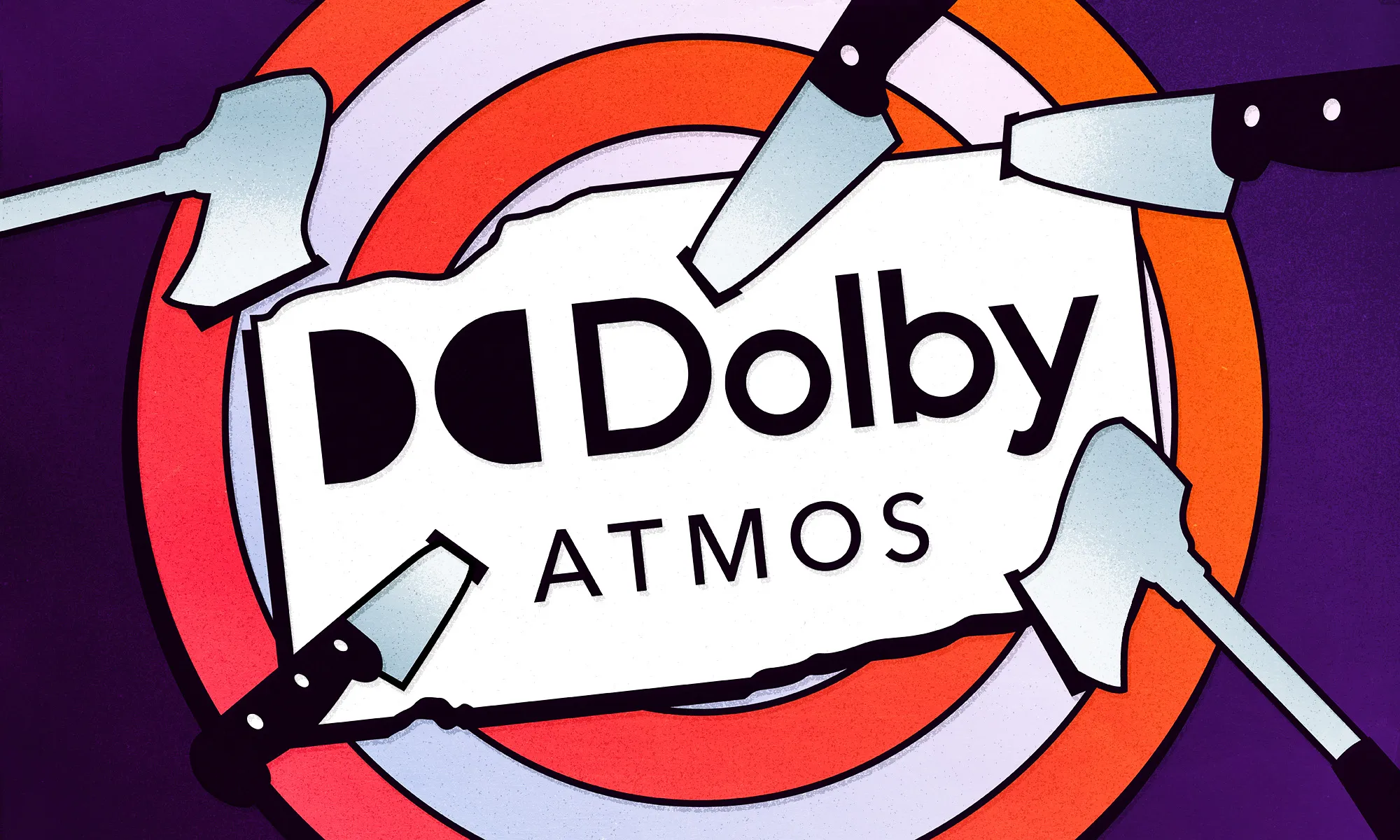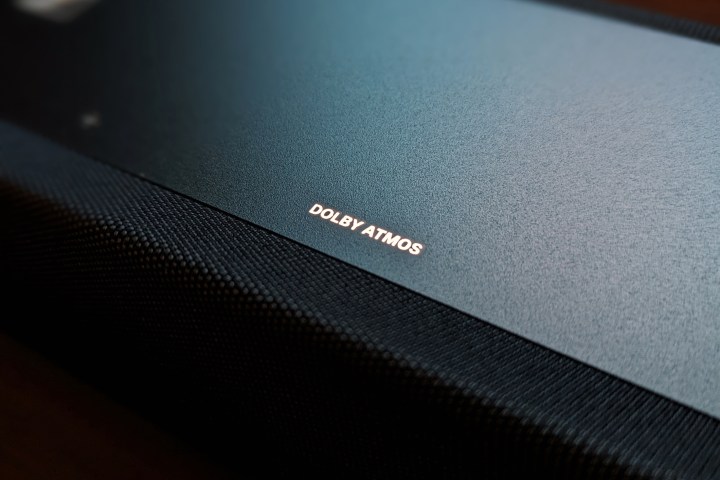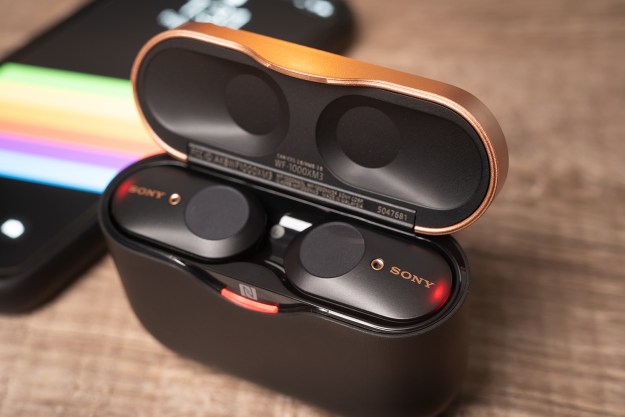
When you think of immersive, 3D sound for movies and music, one name usually comes to mind: Dolby Atmos. Despite the existence of competing surround sound formats and technologies,like DTS:X, MPEG-H, Sony 360 Reality Audio, and Auro3D, they barely register when compared to the juggernaut that is Dolby Atmos. With strong (and growing) support from movie studios, music labels, streaming services, game consoles, smartphones, and audio equipment makers, there’s little doubt that Dolby Atmos and Dolby Atmos Music have become the de facto 3D sound standards.
And yet, if Google and Samsung get their way, Dolby Atmos’ reign as the king of immersive audio might be about to meet its biggest challenge to date. Together, the two tech giants have been quietly working on an open-source and royalty-free 3D sound format known by the awkward name Immersive Audio Model and Formats. But if history has taught us anything, it’s that format wars are rarely fought for the benefit of the public. And even a free version of Atmos that’s every bit as good as the original could face harrowing barriers to adoption.
Why do we need another Dolby Atmos?

Why have Google and Samsung teamed up to create a Dolby Atmos competitor? It’s probably somewhat about control, but almost certainly mostly about the money. Specifically, the licensing fees that Dolby Labs charges any company that wants to make a Dolby Atmos-compatible product or service, like a TV, a streaming media player, a soundbar — or a smartphone. (Lest we forget, Google and Samsung are the driving forces behind Android and between them own a major chunk of the non-Apple smartphone market).
It’s hard to say just how much money Samsung and Google pay to Dolby Labs annually (Dolby licensees are forbidden from sharing the terms of their agreements), but we do know that in 2022, Dolby Labs recorded $1.25 billion in revenue. It doesn’t break out the licensing revenue from Dolby Atmos separately, but you can bet it represents a significant percentage of the total.
Beyond the cost savings, Samsung touts the benefits of having a single 3D audio standard for an entire industry. It claims that IAMF will improve the overall audio experience through scene-based AI analysis, as well as give listeners the ability to emphasize the portion of a soundtrack that matters most to them. In one example, a sports broadcast could be adjusted to emphasize the commentators’ dialogue or the on-field action.
Who’s going to use IAMF?
IAMF appears to offer audio creators the same level of flexibility when it comes to creating spatial audio mixes that Dolby Atmos does, including built-in adaptation to a wide variety of playback devices and environments, from headphones to soundbars to full home theater systems.
Since Dolby Labs also charges licensing fees for its Dolby Atmos software tools — between $100 and $300 depending on your eligibility for discounts — there’s an immediate financial incentive for creators (especially amateur recording artists) to start exploring what IAMF can do. That’s especially true if adopting IAMF ends up being a relatively smooth transition from Dolby’s tools.
Again, it’s hard to say how much a record label like Universal Music Group or a movie studio like Disney spends on Dolby Atmos for their music and movie productions, but a free alternative likely would prove tempting.
Royalty-free, but not cost-free

For folks at home to hear IAMF content, we’ll need a source of IAMF and compatible devices. It’s far from guaranteed that the larger entertainment industry will oblige.
One of the keys to Dolby Atmos’s massive adoption has been brand awareness. Dolby Atmos began its public life in commercial movie theaters in 2012, where it quickly earned a reputation for putting audiences in the literal center of the action, as music and sound effects zoomed overhead for the first time. As soon as the technology made the leap to home theaters, it became a must-have for any serious cinephile.
Seeing the Dolby Atmos logo on AV receivers, Blu-ray players, TVs, and soundbars became a big selling point, even though — as we’ve lately argued — there’s no longer a real connection between the Dolby Atmos brand and a specific sound experience. Nonetheless, a strong and widely recognized brand is hard to beat.
IAMF will find itself in a familiar chicken-or-egg battle when it comes to adoption. Even though IAMF is open-source and royalty-free, there will still be costs associated with implementing it. Before major studios, labels, and content distribution companies like Netflix agree to invest in IAMF content, they’ll want to see proof of demand — this is one of the reasons why DTS:X is so hard to come by on streaming platforms.
If we don’t own IAMF-compatible equipment, why would those companies make such an investment? And it won’t be easy for makers of TVs, AV receivers, or soundbars to convince us to buy IAMF products if there’s no content.

I’m willing to bet that a lot of people have bought Dolby Atmos-capable products purely on the strength of the Dolby Atmos brand. They probably assume that they’ll get a movie theater-like experience as soon as they plug it in, even though that likely won’t be the case (a Dolby Atmos system without Dolby Atmos content can only deliver upmixed stereo or 5.1 sound.) Without Atmos’s powerful brand recognition, IAMF won’t be able to accomplish the same task.
Device manufacturers might simply take the long view and add IAMF to any product that currently supports Dolby Atmos, to prime the pump. They might even market it as a future-proofing feature to “be ready when IAMF content comes to your favorite streaming service!”
The hope might be that, eventually, the installed base of IAMF products will be big enough that the content providers and distributors become willing to throw their hats in the ring.
Google, with its control over Android, Google TV, and Google Assistant-driven Nest devices, could simply add IAMF to all of these platforms, giving the nascent format an impressive head start.
It’s also worth noting that Google and Samsung aren’t in this alone. IAMF gained its royalty-free status via the Alliance for Open Media, which includes representatives from Apple, Netflix, Google, Samsung, Intel, Microsoft, and Meta — just to name the heavyweights. IAMF could gain a lot of traction via these companies’ combined products and services, much as the AV1 codec has started to do.
At that point — if it ever comes to pass — the entire content ecosystem could decide to walk away from Dolby Atmos and save itself all of the associated costs. And yet, somehow this seems unlikely.
We’ve seen this movie before

There’s a parallel between the Dolby Atmos-IAMF relationship and the Dolby Vision-HDR10+ relationship. Just like IAMF, HDR10+ is a royalty-free dynamic HDR format that has many features in common with Dolby Vision. And just like IAMF, Samsung is HDR10+’s biggest supporter. To this day, no Samsung TV has included Dolby Vision.
And yet, despite its royalty-free nature, Samsung’s full-throated support, and the fact that it’s been around for many years, the HDR10+ standard still isn’t used by major streaming services like Netflix, Disney+, Peacock, or Max.
This suggests that it will take more than the promise of lower costs to get widespread adoption of IAMF.
The cost of confusion
This brings us back to the question of branding and awareness. Previous advances in movie audio have had the benefit of the full weight of the Hollywood hype machine. At this point, I doubt there’s a moviegoer alive who hasn’t heard (and seen) the THX “Deep Note” intro prior to watching a movie that uses George Lucas’s famous invention. And as I mentioned earlier, Dolby Atmos was thrilling theater audiences long before it became available at home. Will IAMF ever get the same red carpet rollout?
If it does, there’s a chance that people will become familiar enough with IAMF that they start to look for it, and possibly base their buying decisions on its presence.
If it doesn’t, most folks will likely only find out about it through sites like Digital Trends. And the most we’ll be able to say is something like, “it’s a royalty-free version of Dolby Atmos.” Not exactly a ringing endorsement.
Then there’s the game-time decision question. Remember when I said that device makers are likely to build products that support both Dolby Atmos and IAMF? Any streaming service (or disc-based media) that currently offers Dolby Atmos — and wishes to add IAMF — will have to provide its subscribers with a way to choose between these formats, adding yet more complexity.
Don’t get me wrong, competition is almost always a good thing, and I’m excited to see that Dolby Atmos’ near stranglehold on immersive audio is about to face its first real challenge. But I’m deeply skeptical that IAMF — without the help of a major branding and awareness effort — will prove to be an alternative that will see the mass adoption needed to hold its own.
Editors' Recommendations
- You Asked: Sony surround, FlexConnect vs. Sony HT-A9, LG G4 vs. Samsung S95D
- 3D is readying for another comeback — and this time it’s personal
- LG’s 2022 soundbars start at $400, pump out hi-res audio and 3D sound
- 3D-printed eartips could mean way more comfortable and better-sounding earbuds
- Apple’s AirPods Pro spatial audio turns your iPhone into a movie theater




